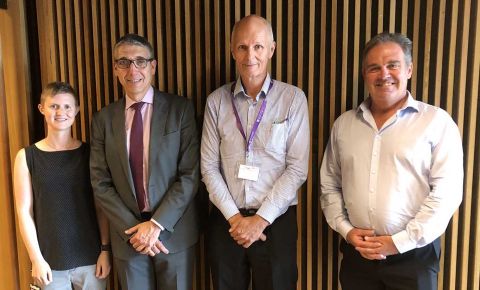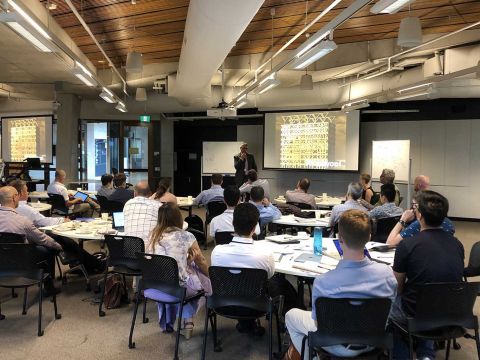On the 9 & 10 December 2019, the Future Timber Hub at The University of Queensland held a 2-day continuing professional development course on integrated design of timber buildings with focus on fire safety (expert Professor José Torero), durability (expert Geoff Stringer) and building physics (expert Samantha Anderson).
Dr Lisa Ottenhaus, from The University of Queensland's School of Civil Engineering, coordinated the course alongside Kelly Rischmiller, ARC Future Timber Hub. "Integrated design is very important for timber structures" Dr Ottenhaus explained, "There are many performance requirements that need to be considered and at first sight may be contradicting – the fire safety engineer needs compartmentation and the building physicist needs air tightness but then building services penetrate compartments and air tight membranes. That’s why all experts need to communicate with each other right from the start to find an optimal integrated design solution that meets all performance targets."
This was certainly the theme of the two days, and the delegates, who were made up of structural engineers, fire engineers, architects and other building design professions were able to learn from our leading experts’ insights in terms of:
- Timber and fire: Timber self-extinguishes and that timber buildings can have outstanding fire performance but design for fire requires a high level of competency.
- Timber and durability: Defining service life requirements and understanding deterioration mechanisms are essential for reliably durable structures. One approach applies the “four D’s” of timber wall protection against fungal attack; Deflection, Drainage and Drying of water, as well as Decay Resistance of the timber product.
- Timber and building physics: The concept of air tightness combined with mechanical ventilation definitely seemed to be new territory for most attendees.
Dr Ottenhaus advised "In this workshop we focused on fire safety, durability and building physics. Fire safety is a hot topic for timber since it’s a combustible material – however – if designed correctly its fire performance can outperform that of reinforced concrete or steel. Durability and building physics on the other hand can become very costly in terms of maintenance so it’s important to take them into consideration especially when we talk about healthy and energy efficient buildings."
Many attendees commented that they will definitely apply their new knowledge in their work practice and share their insights with colleagues. The interactive workshop exercises, which included an examination of a timber boardwalk for durability and an assessment of air tightness in different climate zones, were very well received. "This is great since many attendees did not have any prior formal education on timber design so their practice will directly benefit from these new insights", said Dr Ottenhaus.
In the future, the Future Timber Hub at the University of Queensland is hoping to run more CPDs on other topics relating to integrated design such as design of timber connections and acoustics.
Also showcased on Timber & Forestry Enews - Issue 590





